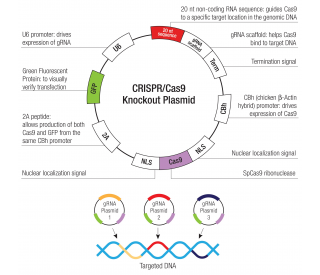Purity
>97%, by SDS-PAGE under reducing conditions and visualized by silver stain
Endotoxin Level
<0.10 EU per 1 μg of the protein by the LAL method.
Activity
Measured in a cell proliferation assay using TF‑1 human erythroleukemic cells. Kitamura, T. et al. (1989) J. Cell Physiol. 140:323. The ED 50 for this effect is 1-4 ng/mL.
Source
E. coli-derived Thr19-His131
Accession #
N-terminal Sequence
AnalysisThr19
Predicted Molecular Mass
12.3 kDa
Carrier Free
What does CF mean?
CF stands for Carrier Free (CF). We typically add Bovine Serum Albumin (BSA) as a carrier protein to our recombinant proteins. Adding a carrier protein enhances protein stability, increases shelf-life, and allows the recombinant protein to be stored at a more dilute concentration. The carrier free version does not contain BSA.
What formulation is right for me?
In general, we advise purchasing the recombinant protein with BSA for use in cell or tissue culture, or as an ELISA standard. In contrast, the carrier free protein is recommended for applications, in which the presence of BSA could interfere.
1945-RL |
| 1945-RL/CF |
Formulation Lyophilized from a 0.2 μm filtered solution in PBS with BSA as a carrier protein. | Formulation Lyophilized from a 0.2 μm filtered solution in PBS. | |
Reconstitution Reconstitute at 10 μg/mL in sterile PBS containing at least 0.1% human or bovine serum albumin. | Reconstitution Reconstitute at 100 μg/mL in sterile PBS. | |
Shipping The product is shipped at ambient temperature. Upon receipt, store it immediately at the temperature recommended below. | Shipping The product is shipped at ambient temperature. Upon receipt, store it immediately at the temperature recommended below. | |
Stability & Storage: Use a manual defrost freezer and avoid repeated freeze-thaw cycles.
| Stability & Storage: Use a manual defrost freezer and avoid repeated freeze-thaw cycles.
|
Background: IL-13
IL-13 is a 17 kDa immunoregulatory cytokine that plays a key role in the pathogenesis of allergic asthma and atopy. It is secreted by Th1 and Th2 CD4+ T cells, NK cells, visceral smooth muscle cells, eosinophils, mast cells, and basophils (1 - 3). IL-13 circulates as a monomer with two internal disulfide bonds that contribute to a bundled four alpha -helix configuration (4, 5). Mature rat IL-13 shares 59%, 75%, and 60% amino acid sequence identity with human, mouse, and rhesus IL-13, respectively. Despite the low homology, it exhibits cross-species activity between human, mouse, and rat (6, 7). IL-13 has diverse activities on numerous cell types (8). On macrophages, IL-13 suppresses the production of proinflammatory cytokines and other cytotoxic substances. On B cells, IL-13 induces immunoglobulin class switching to IgE, upregulates the expression of MHC class II, CD71, CD72, and CD23, and costimulates proliferation. IL-13 upregulates IL-6 while downregulating IL-1 and TNF-alpha production by fibroblasts and endothelial cells. IL-13 binds with low affinity to IL-13 R alpha 1, triggering IL-13 R alpha 1 association with IL-4 R alpha. This high affinity receptor complex also functions as the type 2 IL-4 receptor complex (9, 10). Additionally, IL-13 binds with high affinity to IL-13 R alpha 2 which is expressed intracellularly, on the cell surface, and as a soluble molecule (11 - 14). IL-13 R alpha 2 regulates the bioavailability of both IL-13 and IL-4 and is overexpressed in glioma and several bronchial pathologies (10, 15, 16). Compared to wild type IL-13, the atopy-associated R110Q variant of IL-13 elicits increased responsiveness from eosinophils that express low levels of IL-13 R alpha 2 (17).
References:
Wills-Karp, M. (2004) Immunol. Rev. 202:175.
Nakajima H. and K. Takatsu (2007) Int. Arch. Allergy Immunol. 142:265.
Lakkis, F.G and E.N. Cruet (1993) Biochem. Biophys. Res. Commun. 197:612.
Moy, F.J. et al. (2001) J. Mol. Biol. 310:219.
Eisenmesser, E.Z. et al. (2001) J. Mol. Biol. 310:231.
Ruetten, H. and C. Thiemermann (1997) Shock 8:409.
Lakkis, F.G. et al. (1997) Biochem. Biophys. Res. Commun. 235:529.
Wynn, T.A. (2003) Annu. Rev. Immunol. 21:425.
Andrews, A.L. et al. (2002) J. Biol. Chem. 277:46073.
Tabata, Y. et al. (2007) Curr. Allergy Asthma Rep. 7:338.
Chiaramonte, M.G. et al. (2003) J. Exp. Med. 197:687.
Daines, M.O. and G.K. Hershey (2002) J. Biol. Chem. 227:10387
Matsumura, M. et al. (2007) Biochem. Biophys. Res. Commun.360:464.
Tabata, Y. et al. (2007) J. Immunol. 177:7905.
Andrews, A.L. et al. (2006) J. Allergy Clin. Immunol. 118:858.
Joshi, B.H. et al. (2006) Vitam. Horm. 74:479.
Andrews, A.-L. et al. (2007) J. Allergy Clin. Immunol. 120:91.
Long Name:
Interleukin 13
Entrez Gene IDs:
3596 (Human); 16163 (Mouse); 116553 (Rat); 574325 (Primate)
Alternate Names:
ALRHMGC116789; BHR1interleukin-13; IL13; IL-13; IL-13MGC116788; interleukin 13; MGC116786; NC30; P600










